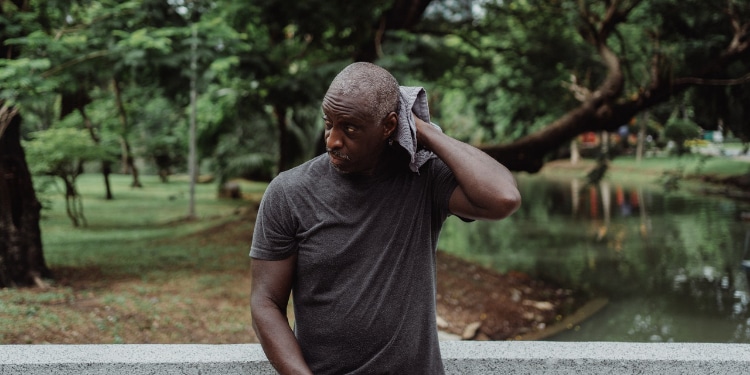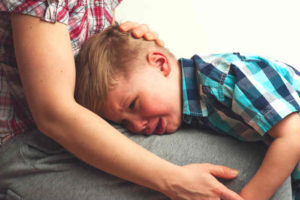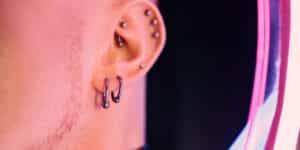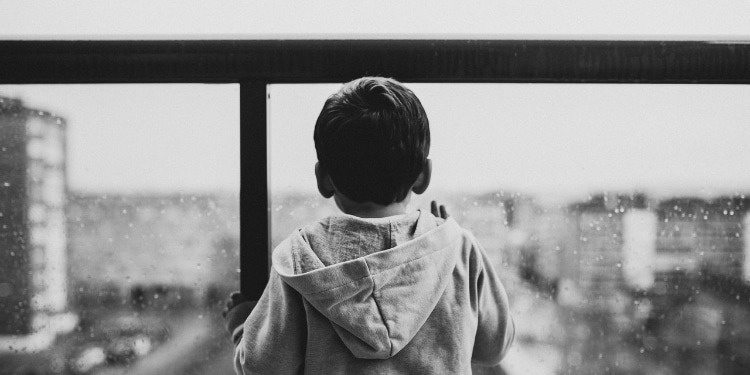










We all experience anxiety and stress from time to time. While these feelings are unpleasant, they do not necessarily manifest in our bodies. However, when they’re intense, anxiety and stress can have a substantial bearing on our physical health.

Common physical symptoms of stress and anxiety include headaches, fatigue, high blood pressure, and rashes. Our bodies and brains work together, so it should be no surprise that anxiety can have a physical impact, too. When you feel stressed, the body reacts by releasing chemicals that can trigger inflammation.[1]
This can make your skin sensitive and cause unsightly flare-ups and rashes.[2] If you are a person who gets frequent anxiety rashes, keep reading to understand what they are and how to handle them.
Anxiety or stress rashes are more common in those with underlying skin conditions such as rosacea and eczema. Yet they can happen to all skin types; even those without previous skin reactions can develop an anxiety rash at any time.
When a person gets stressed, the body releases extra adrenaline and cortisol into the bloodstream to help it prepare to fight off whatever it is that’s causing the stress. This process also results in the release of additional histamine in the same way one would experience an allergic reaction.[3][4]
In essence, as the body turns its focus towards surviving a threat, it sets in motion a series of chemical reactions that can cause rashes or hives, among numerous other unpleasant or downright harmful reactions.
Since there are so many different types of rashes, identifying an anxiety rash is tricky. Rashes occur for all sorts of reasons: a walk in the woods, using a new laundry detergent, or dealing with stress.
The best way to know if your rash is stress-related is to eliminate all other potential causes. In general, anxiety rashes look like red, blotchy hives and can appear anywhere on the body. They will usually itch and will burn if touched.
Be sure to avoid itching the rash, as scratching can cause it to worsen by spreading bacteria. Although a single rash usually goes away in 24-48 hours, if you do not manage your anxiety, new rashes will continue to appear.[5]
Besides being uncomfortable, rashes can be embarrassing for those experiencing them. The pressure to cover up the red, blotchy irritations, avoid having others notice them, and not knowing when they will appear, can be extremely bothersome. The uncertainty of rashes, both when they will come and go, can make it difficult to plan social engagements or even work in a job with regular customer interactions.
Attempts to cover the rash with various makeup and creams or clothing can hinder the healing process. All of this can lead to more stress, exacerbating both the anxiety and rash.[6]
Controlling an anxiety rash begins by controlling with alleviating the stress that caused it. Think about the sources of stress in your life. Perhaps you are dealing with an unhealthy relationship, a demanding job, or financial issues. You may not be able to change any of those situations, but you can control the way you respond to them. Once you have greater control over the anxiety in your life, you may notice milder or fewer rashes. Consider the following as ways to manage your stress:
Physical exercise is as healthy for your head as it is for your heart. Getting your body moving can help take your mind off your stress, lift your spirits, stimulate the production of hormones, and reduce the levels of cortisol and adrenaline, your body’s stress hormones.[7] Regular exercise can help with stress management and keep your anxiety rash under control.
Discussing your problems with a trusted friend can be a great way to relieve stress. Even just knowing that there is someone who cares enough about you to take the time to listen can make all the difference. Whether you meet up in person or simply talk over the phone, communicating with a good friend may help keep your stress and anxiety levels in check.
Sometimes, taking a break from your hectic schedule can successfully alleviate stress. When you feel your anxiety start to creep up, take a break. Even if it is just for 10 minutes to watch a funny YouTube clip, listen to a favorite song, or catch up on a good podcast, you may be able to stay more relaxed during moments of anxiety.
Those with persistent rashes should reach out to their doctor or dermatologist to relieve their symptoms. But cortisone creams and antihistamines can only knock out inflammation for so long. If your rash is not responding to medical treatment, and once allergies and other potential causes are eliminated, it could be time to seek the help of a mental health practitioner to engage in one of the modes of therapy commonly used for treating anxiety. Whether you choose to seek out a local therapist for in-person sessions or sign up with one of the many available online therapy providers, your progress is likely to accelerate with professional guidance.
It is important to understand that you do not have to live with constant and persistent stress-induced rashes. The physical impact you are experiencing as a result of stress is treatable. Once you take action to treat your rashes with the aforementioned options, you can generally expect to see them begin to clear up, along with any of the other physical signs of anxiety you are experiencing.
References